Modelers are always asking "what color was the cockpit of the B-17?" This is a look at what Boeing called for and what was actually done.
The basics: the sidewalls, overhead, and aft bulkhead were all covered with soundproofing which, in turn, was covered with fabric. This 'soundproofing' was, in reality, more a kind of insulation. It was made of tube-stitched batting, stuffed between the ribs much like insulation in a house, with a 'blanket' of fabric that was itself backed with batting running across. Usually, this left the fabric quite uniform in texture. The floor area around the top turret was clear varnished plywood, and the floor directly under the pilots' feet was unpainted aluminum. Then, as Boeing put it, any exposed metal in the cockpit was to be painted with a dark green lacquer.
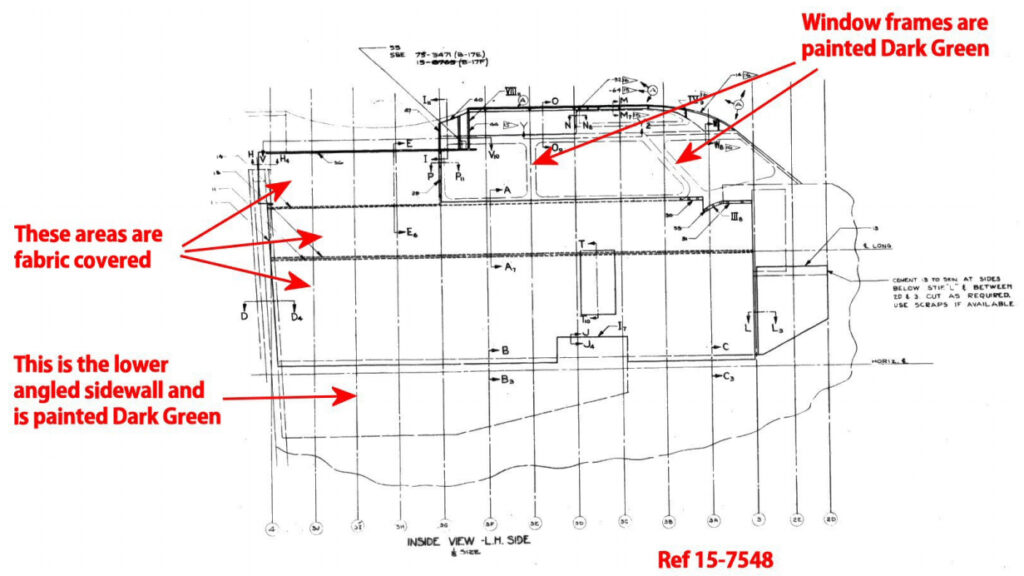
What color was the fabric? Officially it was described on Drawing 1-23205 under item 4 as “COLOR: THE FABRIC SHALL BE YARN DYED (PREFERRED) OR VAT DYED (OPTIONAL) TO MATCH BERRY BROTHERS – BRONZE GREEN NO. 234G9 OR EQUIVALENT.” This means that, in theory, it should have matched the metal items. The photo on the right of an early-F cockpit however shows there was a distinct difference in the color of the fabric and the window frame above.
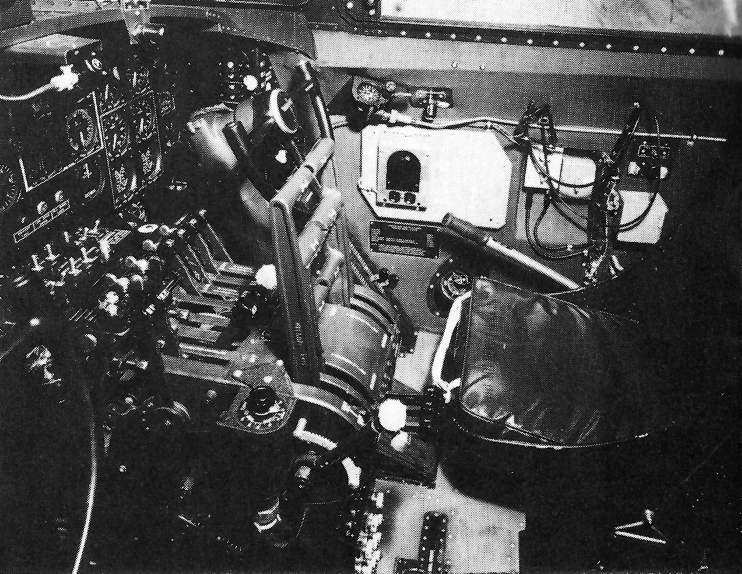
The next batch of photographs show fabric bits in or from Memphis Belle (41-24485, 91BG). The small bit was removed during my trip to see her in the fall of 1979. A couple more photos show bits of the fabric still in place in 1979. The final photo shows bits recovered from the Belle during her restoration at the National Museum of the US Air Force. In 1979, the fabric had been exposed to the environment for most of her nearly 40 years of existence. By the time the NMUSAF started working on her, another 30 plus years had gone by, plus the fabric had been exposed to various cleaning attempts by the folks in Memphis. All of these factors are going to affect the actual color.
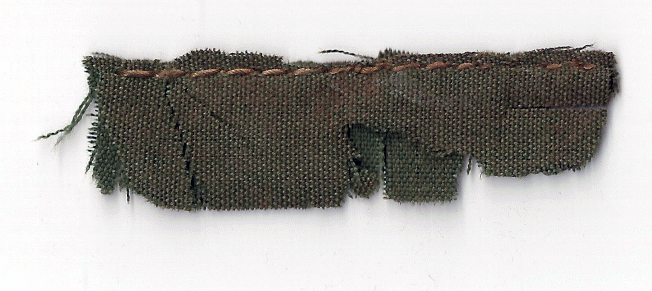

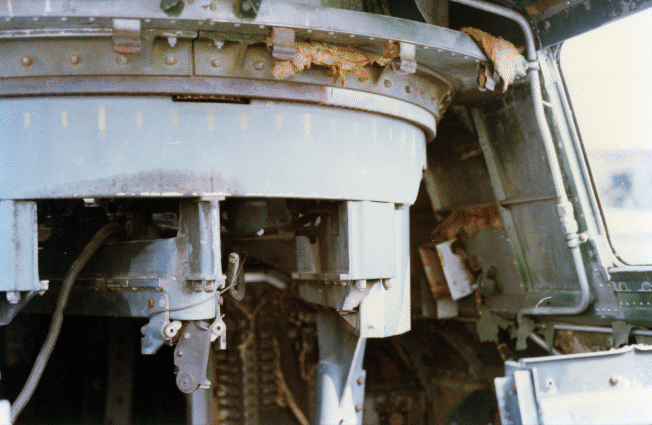
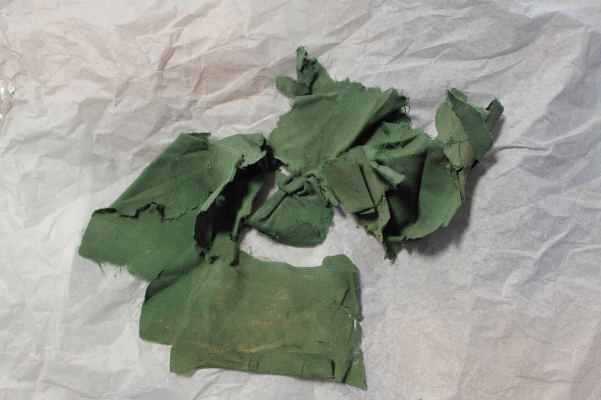
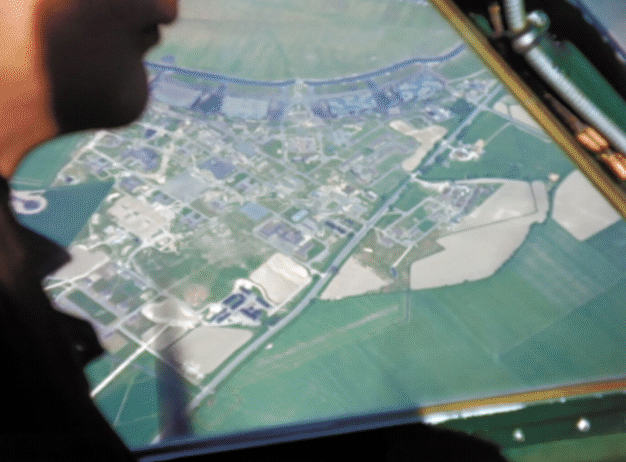
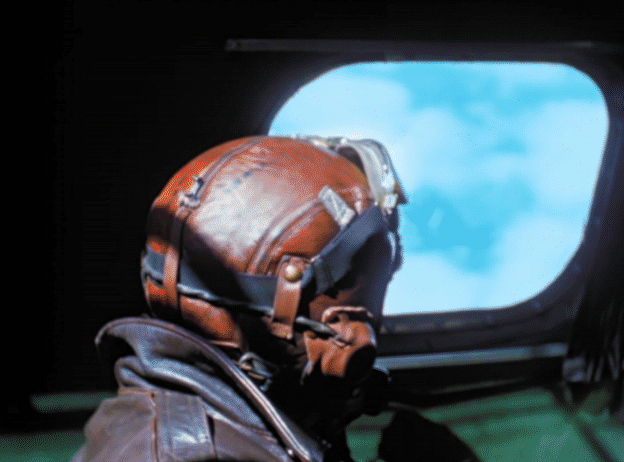
How accurate are the colors shown? The photos I took are subject to the lighting at the time, the film, the developer, and the scans. The restored footage is likely close but the direct sunlight is probably washing it out a bit. It seems that this color was somewhere between an olive and blue-green color, which is why I have tried to provide a variety of references. We do know that there were two suppliers of fabric for the B-17: Hlavaty Insulations of Cicero, Illinois (who also provided the batting) and Burlington Mills of Burlington, North Carolina (who was listed as an alternative). This may account for some of the variation we are seeing. We are lacking good color photos of G-models but Preston's Pride (44-85738) in Tulare, California was preserved with her cockpit insulation and fabric relatively untouched. Again, environment and other factors are going to affect the color.

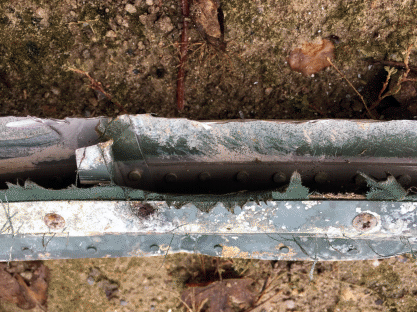
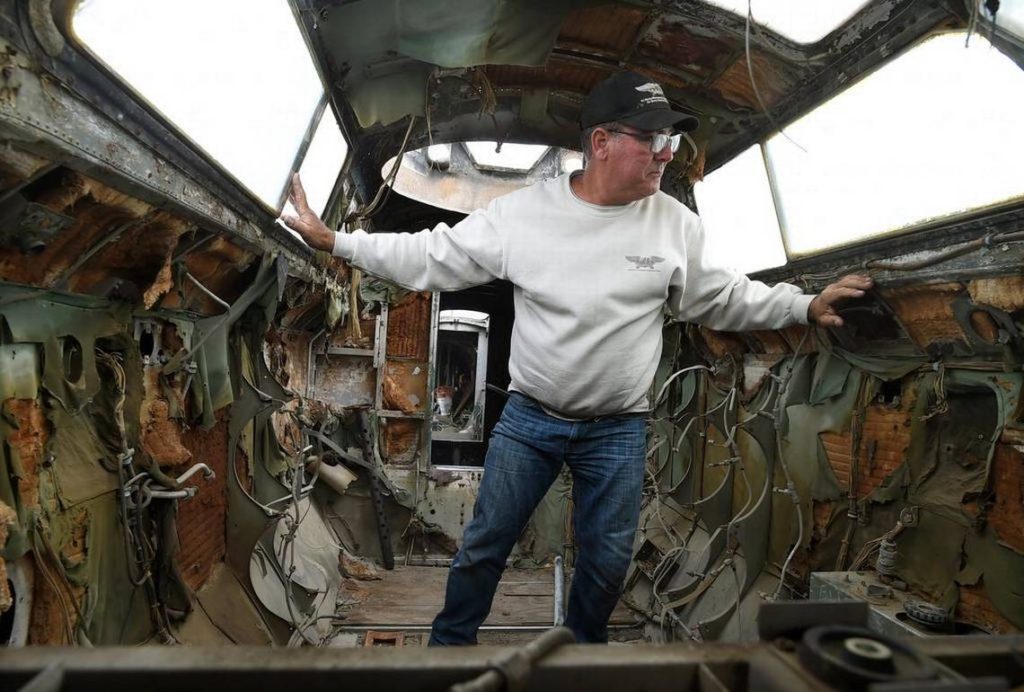
The fabric was over soundproofing which, of course, does not show in the final product. You can see bits of it in some of the cockpit photos. This same treatment applied to the support structure around the top turret and the aft bulkhead. In areas where the insulation could not be fitted between the ribs, thin layers of insulation were glued in place. The walls by the pilots had the thinnest insulation, being little more than a sprayed asbestos slurry. In the first photo of Bulkhead 6, you can see bits of the fabric below the relay box. Soundproofing remains on the sidewall and the dark green oxygen brackets show as well. In the second photo, more fabric remains around the fuel selectors and behind the wire runs. Between the fuel selectors was supposed to be a leather 'scuff patch' although I see no trace of it here.
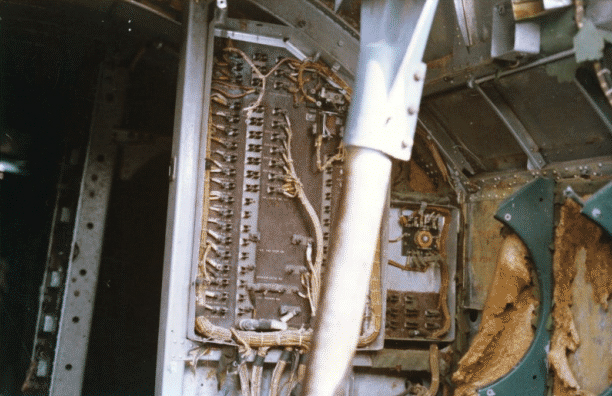
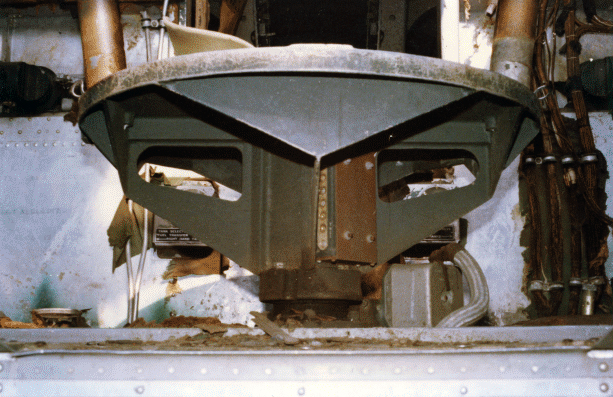
In this image from the Boeing Familiarization Manual, the scuff patch shows quite well. Of interest is the door, as it appears to be painted. According to drawings and later photos, the doors were not supposed to be painted. Manual photos of older B-17s, up through the early Fs (and confirmed in person with Memphis Belle), suggest it was common practice to paint the cockpit door for a time.
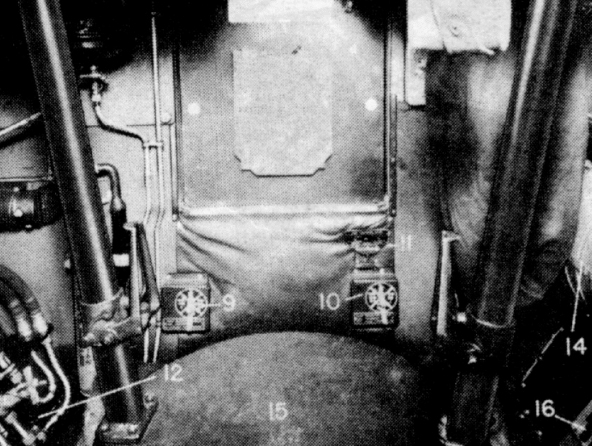
One final reference for the color of the fabric. The B-29 used the same fabric. The Enola Gay (44-86292, 509BG), in theory, had the same material as what was used in the B-17s. Here are a couple of photos from the Smithsonian collection showing the fabric in her. This looks more like Bronze Green as originally intended to me. Note the area in the corner where the fabric has faded to a brown color and the drastic difference between it and the better preserved green. This same phenomena can be seen in the untouched interior of Swoose (40-3097, 11BG).
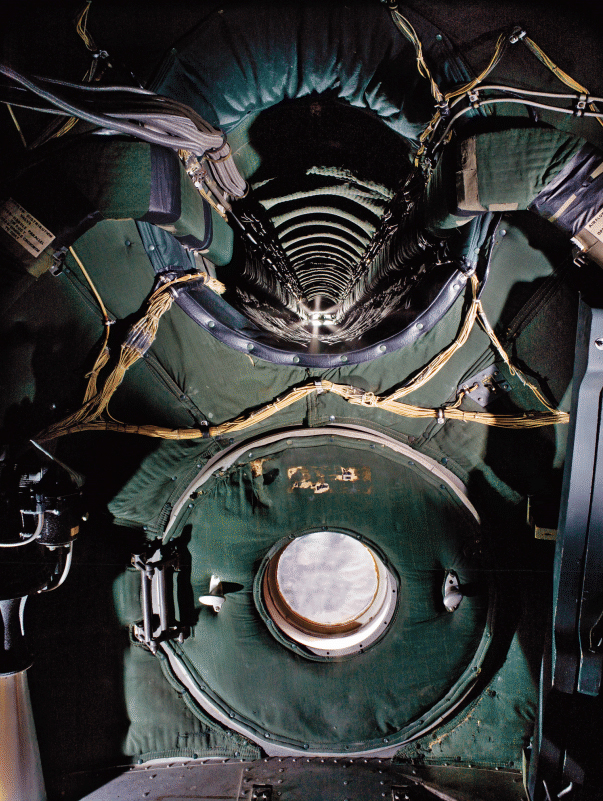
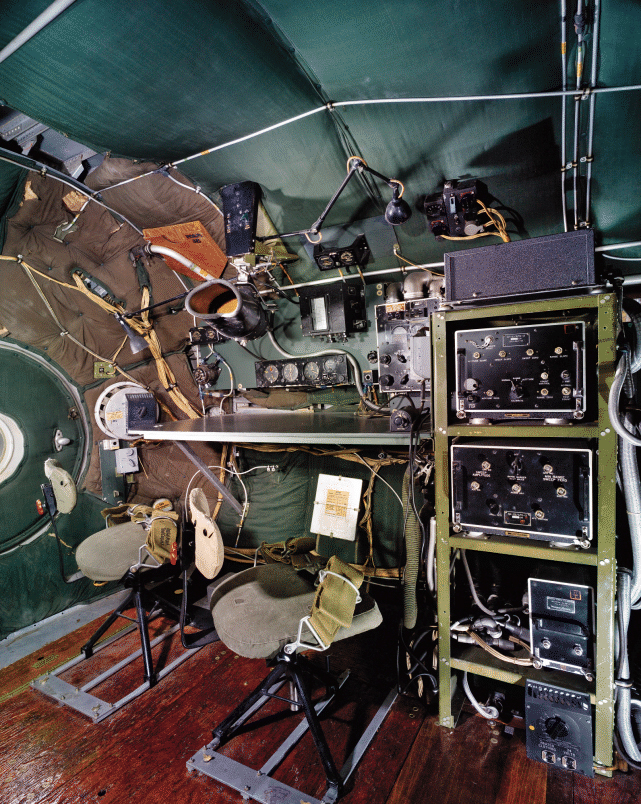
Per Boeing, “the dark green lacquer...shall be duPont Duco No. 258-38154, Berry Bros. Berryloid bronze green lacquer No. 234G9, or the equivalent.” I cannot say with absolute certainty what those colors look like. I do know that Boeing never mentions Interior Green or Dull Dark Green for any interior components. So here is what I have found over the years and it is a bit frustrating for those looking for THE answer.
This first photo is from Life magazine. Due to the lack of windows over the pilots, and another photo from the same series that has seated crewmen behind the pilots, I believe this is a B-17D. Other color photos of later aircraft show seats the same color. The question is, what is this color? How accurate is it? It appears to me like a very dark blue green and only shows up on seats and some seat supports as shown here.
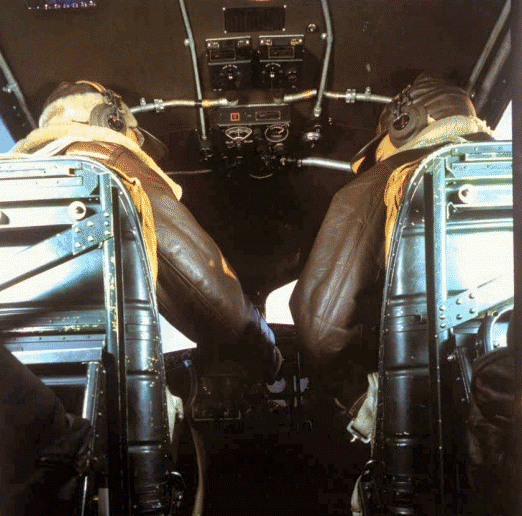
The pilots seat is that same color. His seat support and armor plate look more like tinted chromate. The copilots armor is a darker green (maybe olive drab) and the throttles are yet another green. The plywood (of unknown use) and the wiring diagram box (just showing at the lower right) appear to be a light olive drab. Then again, there is a glare here. On the pilot's seat support is a shelf with the container for the flare gun and an oxygen line for refilling portable bottles.
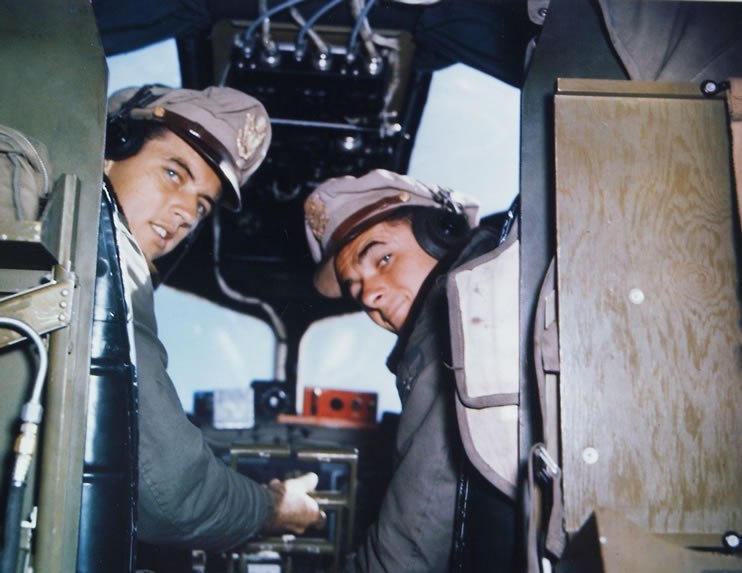
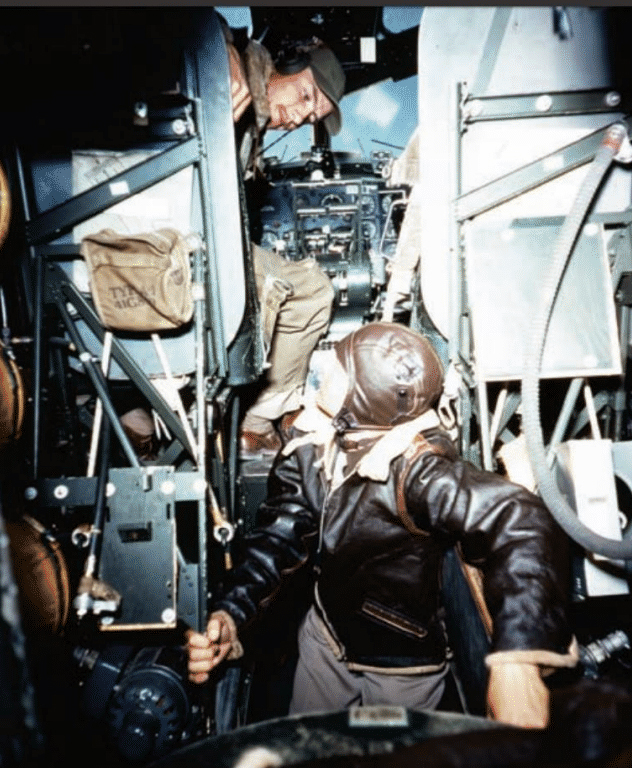

The upper left photo again has the dark seats and seat supports. Rather than use the flare shelf, an additional flare bag has been added. It is hard to say what color the armor is but it is lighter than the seats. The center pedestal looks to be a little more green than the seats but that could also be because of the flash. The portable oxygen bracket at the base of the pilots seat looks to be the same as the seat support. The front of this bracket has been broken off (likely from being grabbed by a crewman entering/exiting the crawlway).
To the upper right is one last seat. It is from the of wreck My Buddy (42-31552, 457BG) in Switzerland. A number of pieces have been recovered from it and they seem to all be this color. She was a Boeing G-20. This makes me wonder if they started painting the seats a different color or if this is just from weathering. I tend to believe they used a different paint. Work by Dana Bell on the use of bronze green by the Army as a whole found that the color was faded out in favor of dark dull green due to its reflective properties. Boeing never referred to such a color, but B-29s and later B-17 cockpits do seem to have a blueish-gray tint to their greens. Maybe this is the difference between the Berry Bros. and duPont paints?
Here are some more bits of My Buddy. The first two show the small stand to the left of the pilot. The aileron trim wheel was mounted here along with the surface deicer control.

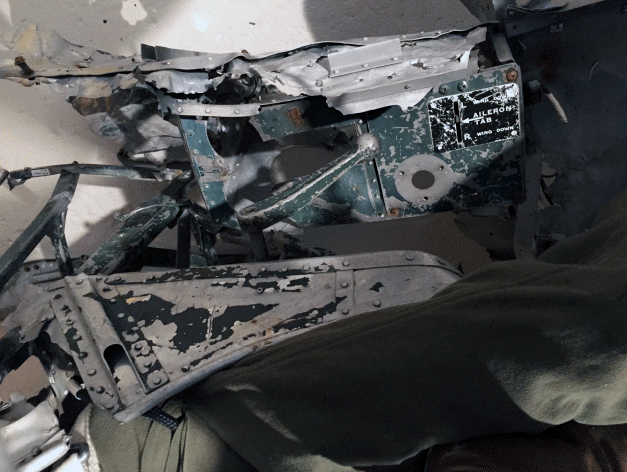
The next two are of the switch panel on top of the glareshield for the IFF system. These four photos show how different lighting affects the color.
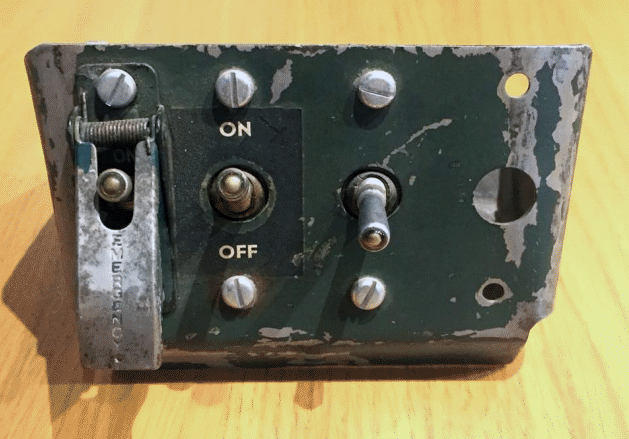
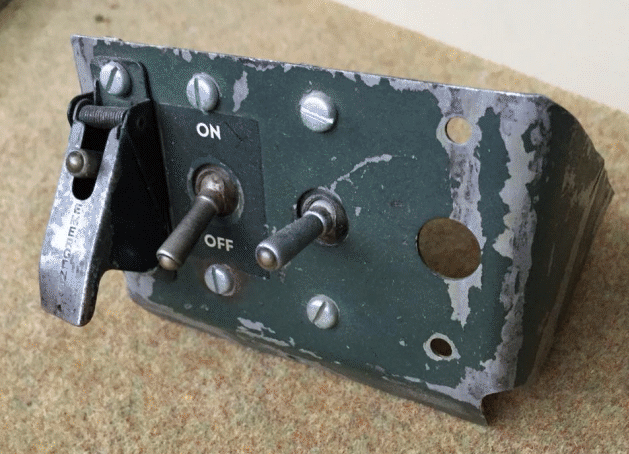
Here are a couple of other bits: a light switch and the mount for the engine primer.
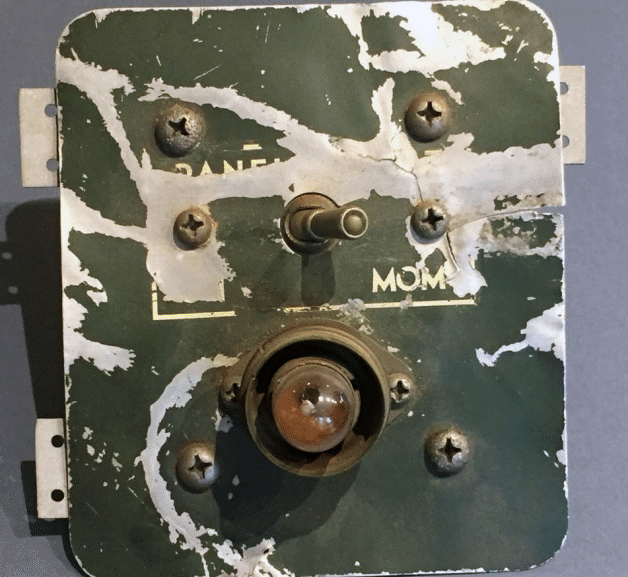

Lighting, exposure, possibly different paint from different sources - all play a factor in what the “Dark Green Lacquer” called out by Boeing actually looks like. Next we have some photos of My Gal Sal (41-9032) as the cockpit pieces were recovered from Greenland.
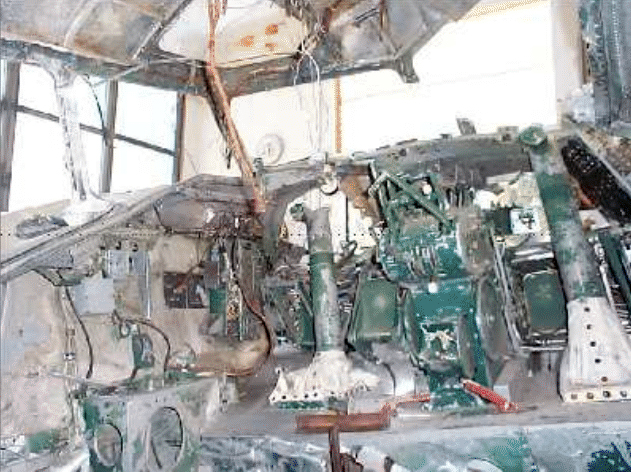
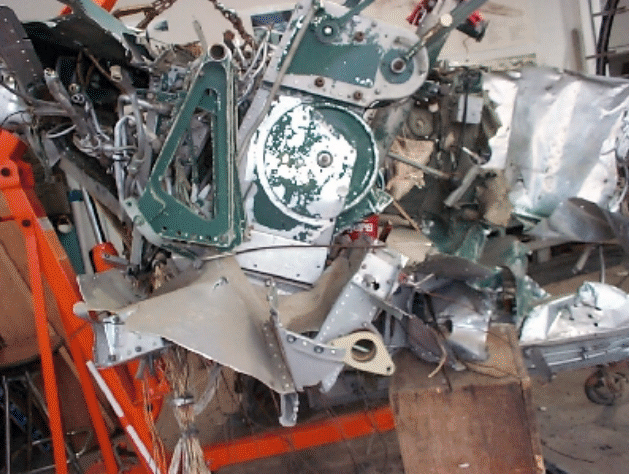

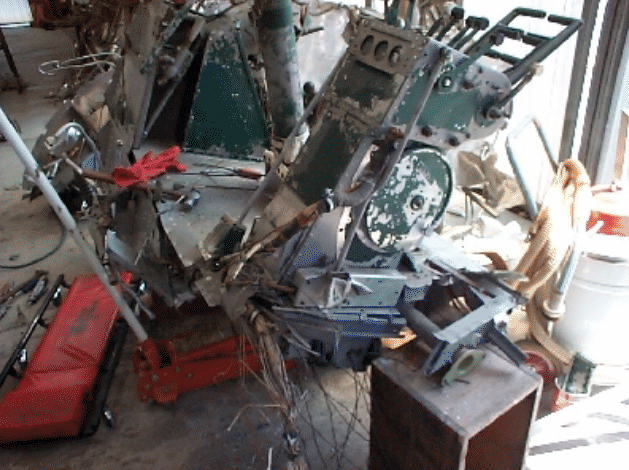
From these, you get a good idea of what all was painted. In the upper left you can see the center pedestal, rudder pedals, control columns, pilots switch panel, trim tab stand, and the area around the windows. Most of this can be seen in the other photos as well. Note that the bits of floor on either side of the center pedestal are unpainted. This aircraft was belly landed and in relatively good shape. But over the years the gale force winds turned the airplane over and tore her apart. And yes ,this is the basis for the airplane now suspended at the museum in New Orleans.
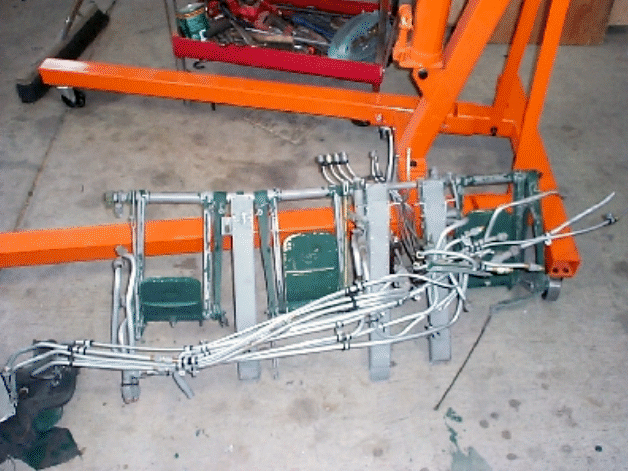
In 1979, I took a trip to Memphis with a friend to see Memphis Belle. The ball turret was not installed so access was quite simple. I still remember standing up and seeing the unpainted fuselage. After years of seeing model instructions telling me about 'interior green,' I was shocked to see there wasn't any in a real B-17. As a matter of fact, there was none in the entire airplane. There was also an interesting little shelf unit to the left of ball turret opening. But we will get to that another day...
On to the cockpit. While it was amazing to be in the actual Memphis Belle it was very disheartening to see the damage vandals and years of neglect had done to her. The pics from 1979 are from prints that have been scanned, so the colors are probably off a bit between film processing, printing, and scanning. More recent pictures are digital and I hope more accurately show the colors.
The instrument panel is faded from its original black and does not show a lot of contrast with the green of the center pedestal and the rudder pedals. The switch panel forward of the mixture and turbo controls was black.
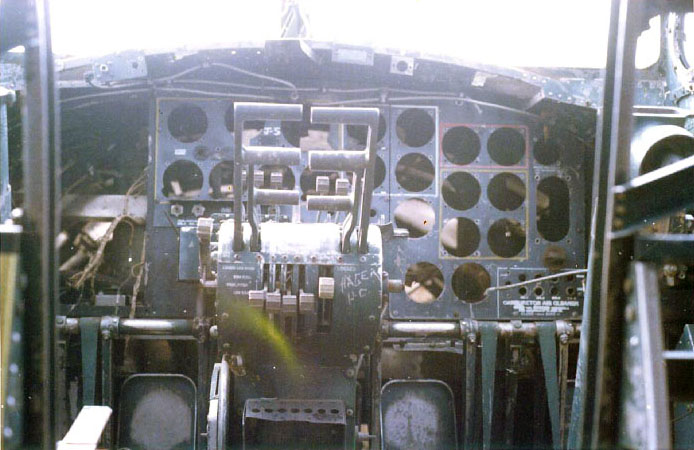
Bits of green show up on the control column, the switch panel, oxygen regulator mount, and edge of the window. Small bits of fabric remain aft of the switch panel and behind the intercom jack box and its accompanying filter. The unpainted areas were where soundproofing material (5/8” thick when installed) has been cemented and there are bits of it remaining. On the pilot's seat is a piece of flooring with the black rubber pyramid matting taken from the waist or radio floor.
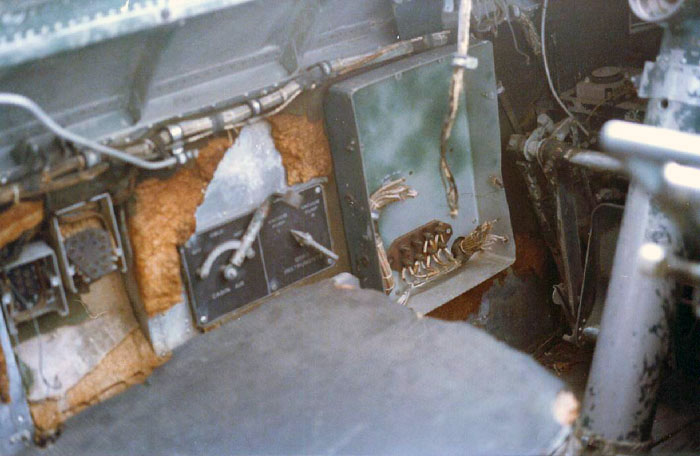
The green of the column, intercooler stand, oxygen regulator bracket, and window frame show up here. More fabric and soundproofing. The metal plate with the suit heater outlet is in the left center. Suit heat outlets contained a large rheostat, which apparently got warm, as you always see them mounted on metal plates standing out from whatever surface they were mounted on. These plates had asbestos backings on them.
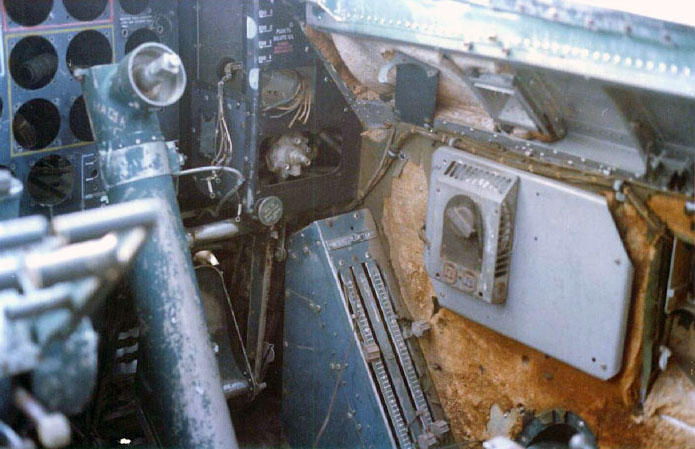
Here is the Belle cockpit after the NMUSAF started work on her. The center pedestal has some of the 'interior green' that the folks in Memphis sprayed on it. At the base you can see the original color.
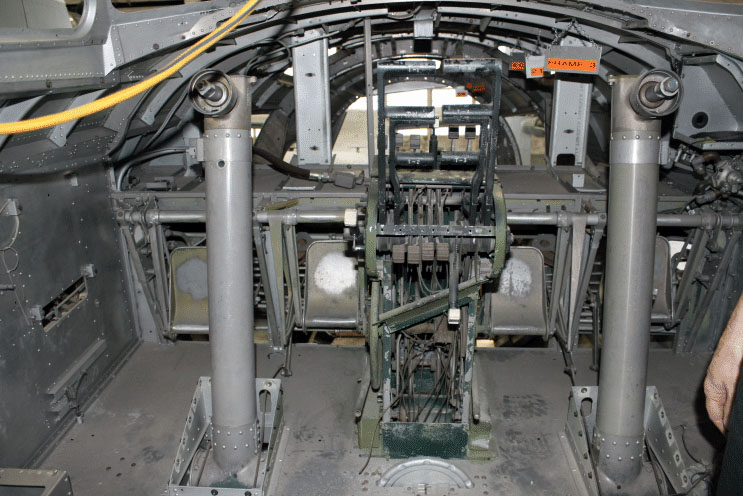
This is the opening on the lower right sidewall where there was a fresh air inlet. The NMUSAF crew were the first people to remove the grill. This again revealed original paint that had not been exposed to sunlight in nearly 75 years. Actually, this probably was never exposed to sunlight since it left the factory. Possibly affected by cleaning agents.
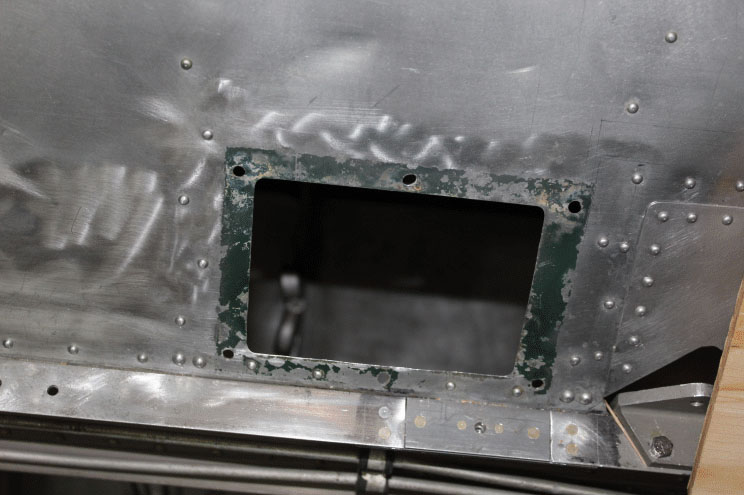
A few more items that I have found on the Internet. First is a part of the cockpit ceiling that was removed from an airplane being scrapped. It is painted around the windows. The paint appears much like the dark color used on the seats earlier. Years of exposure of course, will make the original color suspect. It does clearly show how the only painted areas were those around the windows.
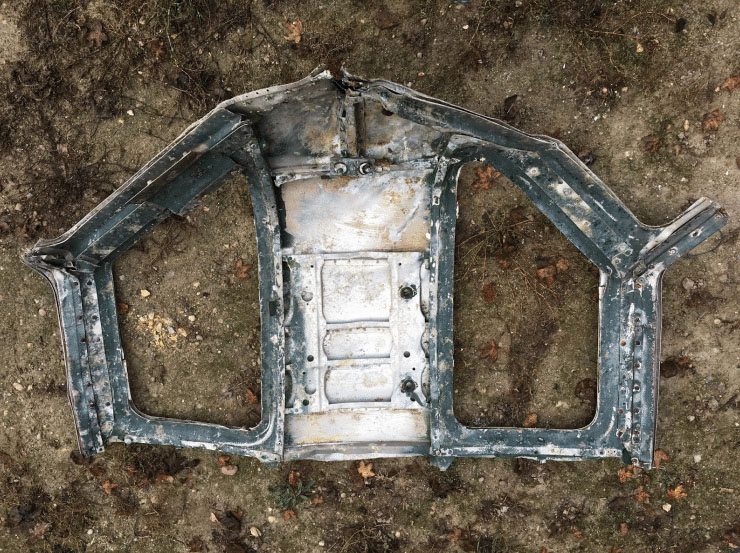
Here is a pilots switch panel. I am not sure which airplane it came from. Another one of those things I had believed was painted black but was not. Because of the placement of the voltmeter vs. the ammeters, this is an older, pre-F variant. The black decals are worth noting as the panel seen in the How to Fly the B-17 training film (which was shot aboard an F) is altogether green.

Another pedestal, not sure of its heritage. Because its turbo controls are manual, we know it is from a pre-G B-17.
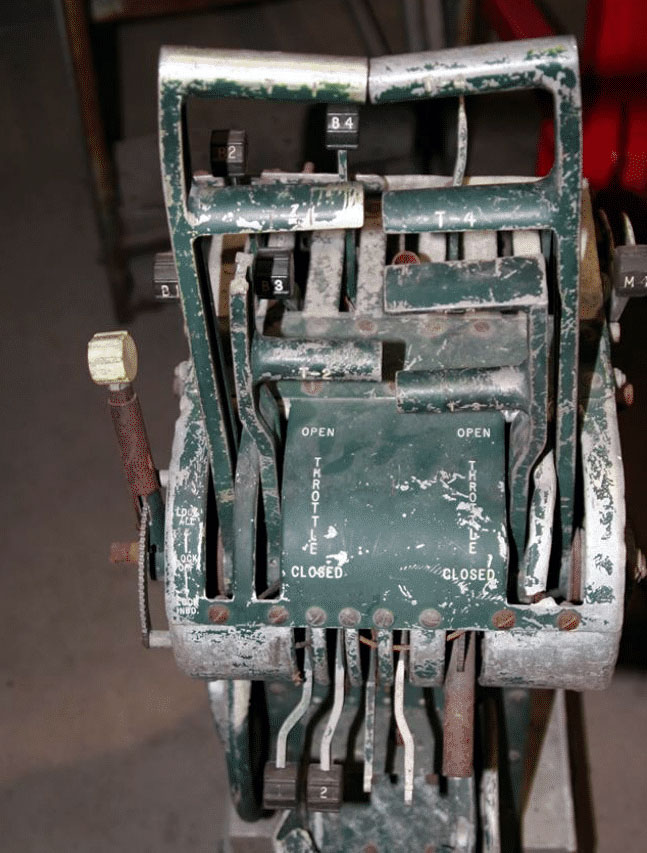
This is a cockpit shot of the airplane referred to as Swamp Ghost (41-2446, 19BG). Another view of severely weathered green but it held up even after all those years in a rough environment. Also of note, the floor is unpainted. The trim wheel, the metal around it, and around the locking handles are also painted green.
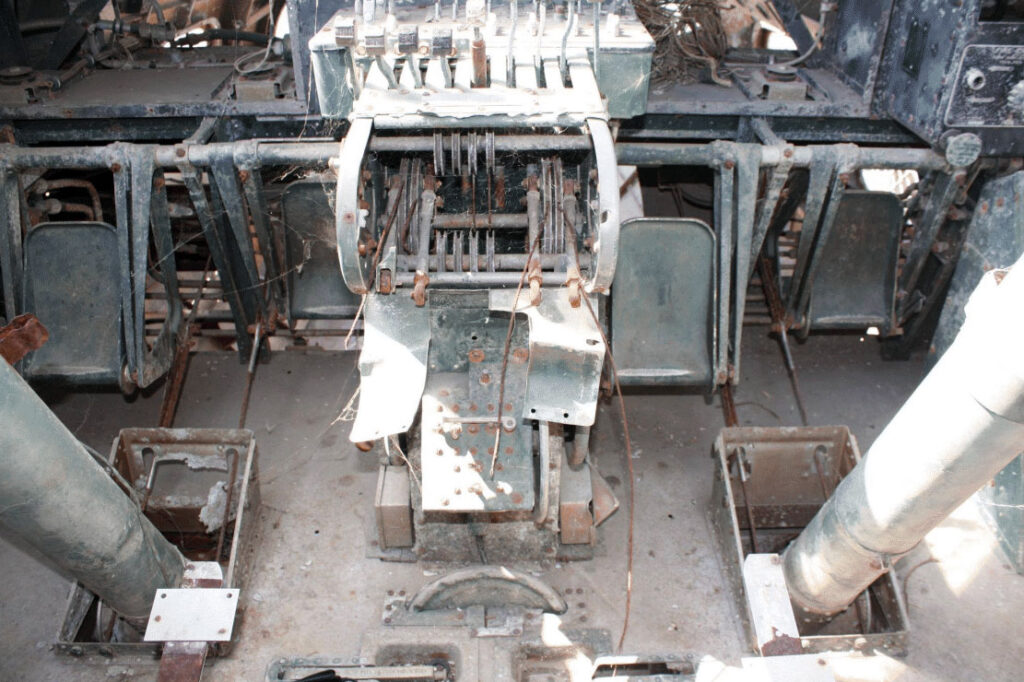
Here are a few Belle photos showing the area around the top turret. To the immediate right is the Bulkhead 4 fuse panel with the green oxygen tank brackets. Below is the turret structure with remnants of soundproofing, some bits of fabric on the fuselage, and just a bit of the paint around the window. Lower right is the rusty armor plate, the accumulator, and the bracket that held the hydraulic tank.


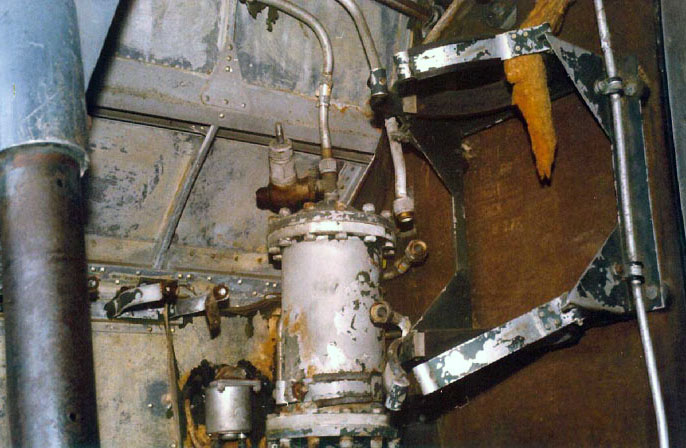
I neglected to go into the details of the floor around the top turret. There are three pieces of 5/16 3-ply Douglas Fir plywood and they were all varnished. At one time I thought the black rubber matting was applied here but that is not the case. I saw mention of the matting in one of the floor installation drawings and assumed. Shame on me. However, that was only on the door leading to the nose. That door was usually removed from combat aircraft.
So, what color is “Lacquer – Dark Green”? Are any of these colors Bronze Green No. 9? I have no definitive reference for that and Boeing never mentions that specific color. I do not know how close the Berry Bros color was to the military color. Is it possible that Boeing (and Douglas and Vega) changed their paint suppliers without mentioning it in the manuals? It seems probable. What is a modeler to do then? Take a look at what is here, take a look at what paints you have available, and do what you are comfortable with.
Here is a list of some of the things that should be painted Dark Green. I have probably missed a few but these are the major items:
Exposed metal around windows
Glareshield
Control Columns
Rudder pedals and support
Center Pedestal
Seats and supports
Pilots Control panel (left sidewall)
Oxygen Regulator mounts
Light switch panels
Aileron trim tab pedestal
Metal around rudder trim wheel
Rudder trim wheel
Metal around locking levers (controls and tail wheel)
Intercooler stand
Emergency Brake handles (F only)
Aft side of structure between pilot and turret area
Oxygen tank brackets
Hydraulic panel
Hydraulic accumulators (two on most F models)
Hydraulic tank
Lower sidewalls by turret
Primer support
Hydraulic hand pump support
